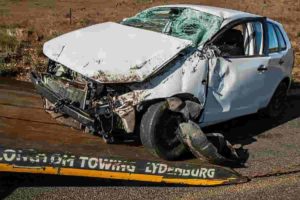Trucking is a dangerous profession, but it does not get the same kind of recognition that other hazardous jobs do. At the end of the day, though, commercial drivers spend a lot of time on the road, and the more miles they travel, the more likely they are to get into a collision as some point.
It is common for truckers to spend less than two months per year at home. Because commercial drivers get such little time off, they are likely to be tired and stressed when they are home, and when they’re on the road, their families worry about them nonstop.
Transporting goods via truck is one of the deadliest occupations in the United States; however, commercial drivers are not the only ones who suffer severe injuries or death following a catastrophic collision. In fact, it is actually passenger vehicle occupants who incur the most damages in such accidents.
Because of their sheer size and weight, a crash between a truck and a car has a much greater force of impact than a wreck between two smaller vehicles. Commercial drivers typically have considerable protection because of their elevated perch, but passenger vehicle occupants are not as lucky. Most fatalities in big rig accidents are the occupants of smaller vehicles.
Fortunately, both commercial drivers and private motorists can reduce the risk of getting into a devastating crash by knowing the leading causes of serious wrecks and taking care to avoid or prevent them. The most common causes of large truck collisions include:
1. Bad Maneuvering Decisions
According to the Large Truck Crash Causation Study (LTCCS), which analyzed a nationally representative sample of tractor-trailer accidents that occurred between 2001 and 2003, the leading cause of big rig wrecks was ultimately driver error. Researchers categorized several different kinds of errors and determined the most common mistakes that led to the most collisions had to do with a trucker’s bad maneuvering decisions. For example, many crashes were the result of turning too sharply or traveling too fast for the road conditions.

Driver errors contribute to the vast majority of semi-truck accidents in the U.S.
2. Distracted Driving
The LTCCS revealed that distracted driving is the second leading cause of commercial truck accidents. When truckers fail to observe their surroundings, they become vulnerable to roadside hazards because they do not have enough time to perform an evasive maneuver if one arises.
3. Drowsy or Impaired Driving
Non-performance is the third leading cause of big rig crashes. This includes drowsy driving and physical impairments that disable the trucker while behind the wheel, like heart attacks and seizures.
4. Vehicle Malfunctions
Both commercial drivers and the motor carriers that employ them have an obligation to maintain their vehicles. When they fail to do so and a tragic accident results, they can be liable for the damages that occur. In the LTCCS, malfunctioning vehicles were responsible for 10 percent of the incidents that researchers reviewed.
5. Poor Driving Performance
Poor performance is the fifth leading cause of large truck crashes. While non-performance refers to passive hazards that are theoretically out of the motorist’s control, like fatigue and health emergencies, poor performance occurs when drivers actively make bad judgment calls while behind the wheel despite having the opportunity to make good ones. For example, overcorrecting or changing lanes too quickly are two examples of poor driving performance.
The above causes all refer to cases in which the commercial driver was at fault for the incident; however, passenger vehicle motorists can cause major truck accidents, too. As a noncommercial driver, you can reduce the risk of getting into a serious collision by exercising caution around tractor-trailers and staying out of their blind spots. Be especially cautious in poor road conditions and when driving in winter weather as large vehicles will require a significant stopping distance.
